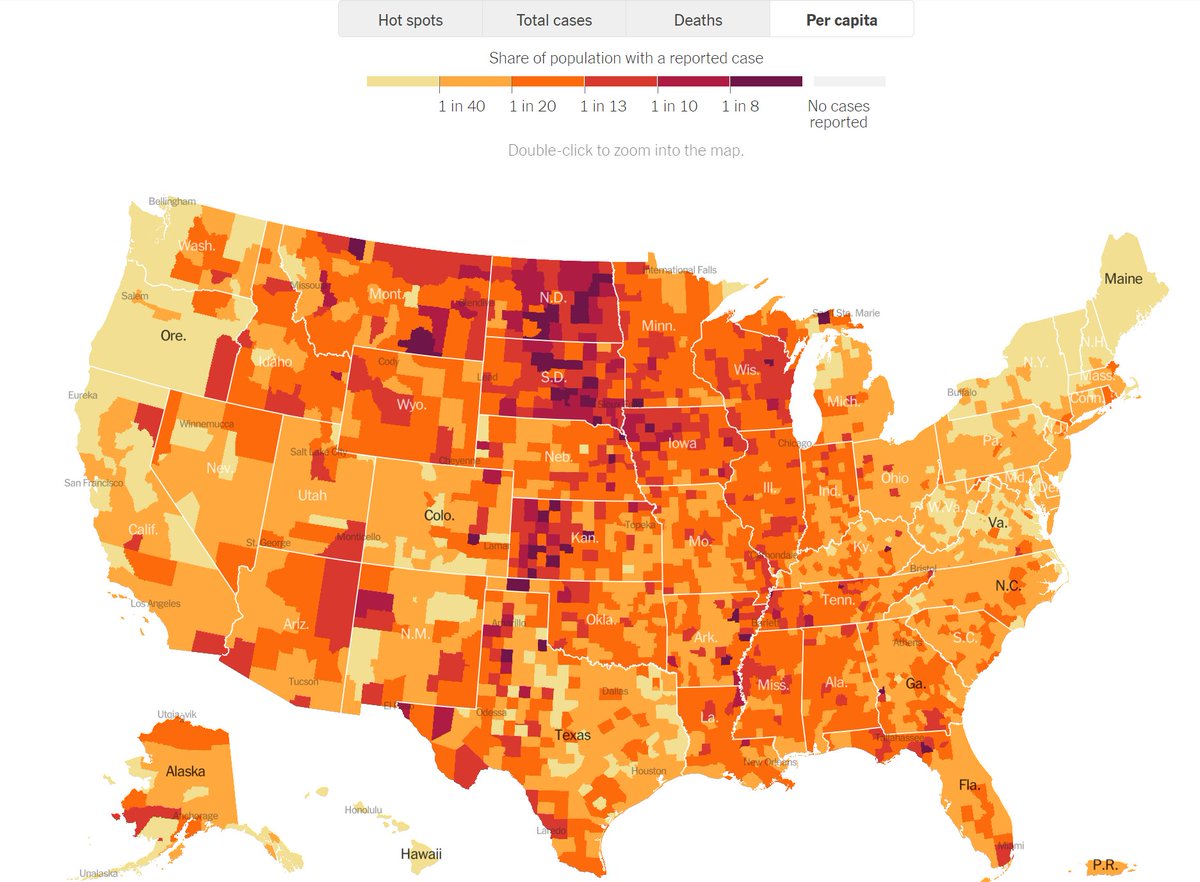
Estimated 76% Manaus and 29% São Paulo population infected by covid by October.
"These results confirm that, when poorly controlled, COVID-19 can infect a high fraction of the population causing high mortality."
science.sciencemag.org/content/early/…
"These results confirm that, when poorly controlled, COVID-19 can infect a high fraction of the population causing high mortality."
science.sciencemag.org/content/early/…
In Manaus, the >70% attack rate is "above the theoretical herd immunity threshold.. Monitoring.. new cases and.. ratio of local versus imported cases.. vital to understand (how) population immunity might prevent future transmission and the potential need for booster vaccinations"
US has 15M confirmed cases, "probably, at best, diagnosing 1 in 5 cases" - former FDA commissioner Scott Gottlieb, Nov '20.
Rough calculation ~23% US population infected with covid by now + doubling time ~50 days according to @OurWorldInData + Xmas/NYE..
cnbc.com/2020/11/06/dr-…
Rough calculation ~23% US population infected with covid by now + doubling time ~50 days according to @OurWorldInData + Xmas/NYE..
cnbc.com/2020/11/06/dr-…
Possible that some parts of US will attain >70% herd immunity by natural covid infection before vaccines are widely distributed in April 2021 or later. nytimes.com/interactive/20… 

This is not a desirable outcome. Would be better to slow the spread to avoid increased fatalities & suffering. I'm just not optimistic Americans are capable of not travelling for Xmas+New Years. Thanksgiving vehicle travel was only ~5% less than in 2019.
globalnews.ca/news/7501416/c…
globalnews.ca/news/7501416/c…
• • •
Missing some Tweet in this thread? You can try to
force a refresh


